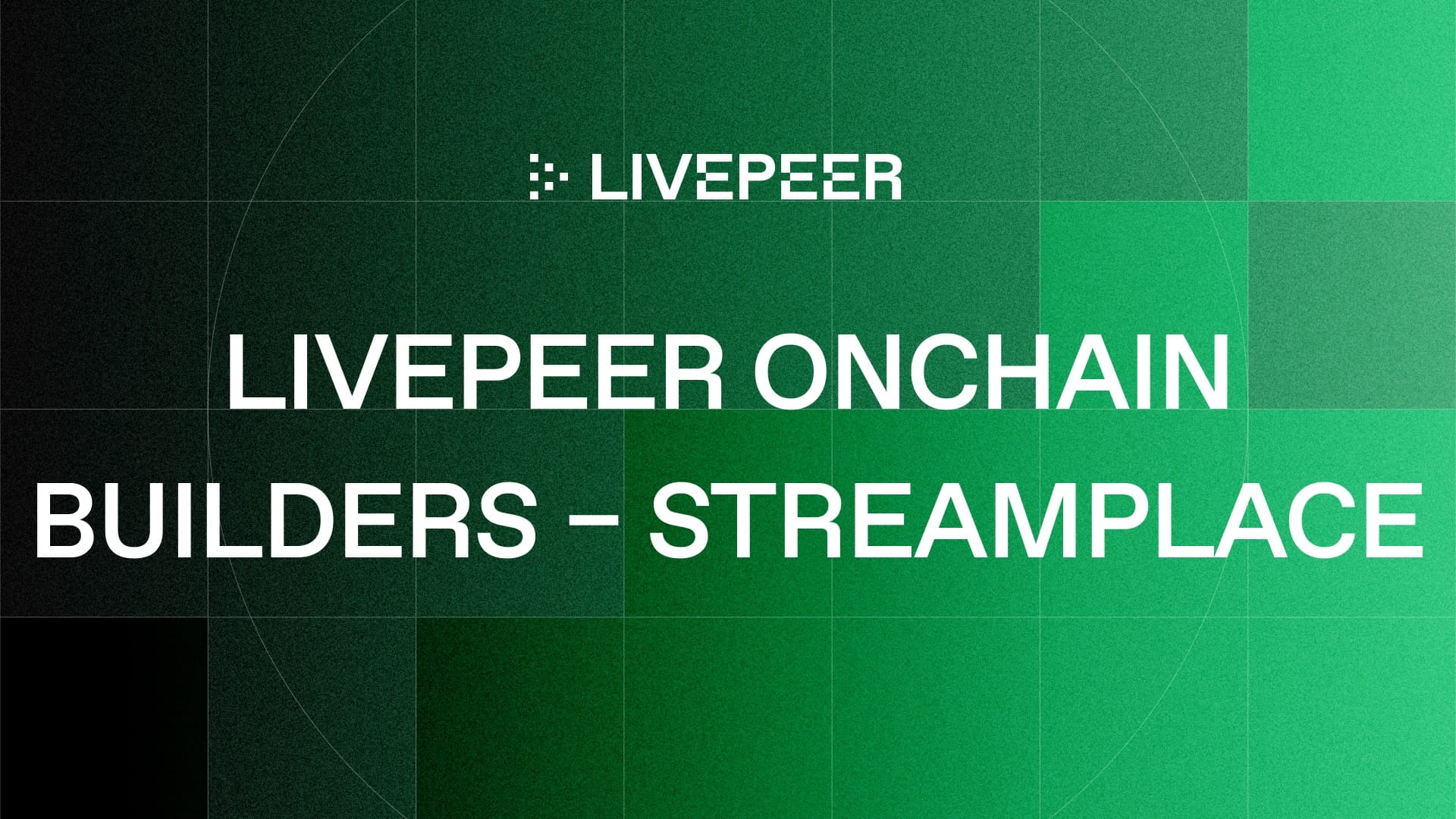Livepeer Onchain Builders - Streamplace: Building the Video Backbone of Decentralized Social

Welcome to Livepeer Onchain Builders, a new content series spotlighting the Special Purpose Entities (SPEs) funded by the Livepeer onchain treasury. SPEs are working groups funded by the community treasury to work on specific tasks and are accountable to the community for their delivery. These deep dives will explore how each initiative is driving protocol usage, expanding infrastructure, and pushing the boundaries of what’s possible in decentralized video and AI.
Streamplace is an open-source video streaming platform designed to power decentralized social applications with real-time, creator-first infrastructure. It aims to make livestreaming and video hosting as seamless as TikTok or YouTube, but built on open protocols and self-sovereign identity.
What makes it ambitious? Streamplace is not only building full-stack video infra for federated social networks, it's doing so in a way that prioritizes interoperability, scalability, and public goods. From developer SDKs to end-user apps, Streamplace is building an entire ecosystem.
What is an SPE?
A Special Purpose Entity (SPE) is a focused, community-funded team contributing to the Livepeer ecosystem. SPEs are typically mission-driven groups that operate independently to build infrastructure, applications, or tooling that expand and improve the Livepeer protocol. These teams are funded through proposals to the onchain treasury and are accountable to the community.
SPEs are necessary for the ecosystem because no single team can build every part of a decentralized protocol. SPEs decentralize development, fund public goods, and allow the community to direct resources where they're most needed.
Why do they matter to delegators and stakeholders? Because SPEs grow in usage. More usage = more fees = more rewards. Delegators benefit when the protocol succeeds, and SPEs are among the most direct ways to make that happen.
From Aquareum to Streamplace
A clear goal drives the team behind Streamplace: to build the foundational video infrastructure for the next generation of decentralized social platforms. These platforms, such as Farcaster and the AT Protocol, promise user-owned identity and interoperability, but have thus far lacked robust support for live and on-demand video.
Streamplace solves this by providing a full-stack, developer-friendly video layer that anyone can plug into. It's a bold attempt to make decentralized video feel as native and easy as its Web2 counterparts.
Streamplace started as Aquareum, a project with the same mission and team. This evolution into Streamplace is a rebranding, not a restart, building on past momentum with a sharper focus.
Their vision is to give every user the ability to publish, stream, and remix content with the same ease as TikTok or YouTube, but backed by self-sovereign identity and decentralized networks.
The first proposal delivered:
- A unified Aquareum node: bundling the Livepeer stack with indexing and playback.
- App releases on iOS, Android, and Web.
- Native integrations with AT Protocol and Farcaster.
- Support for C2PA metadata and content provenance.
Now, Streamplace continues that momentum with 100,000 LPT in treasury funding and a clear mandate to scale.
Why Streamplace Matters
Video is the heart of online social interaction. Yet decentralized social networks have lagged in providing seamless, user-friendly video experiences. Streamplace addresses this by:
- Transcoding every livestream through Livepeer, providing decentralized, low-cost processing for global delivery.
- Powering partner platforms like Skylight Social, a TikTok alternative backed by Mark Cuban, that recently hit #1 in entertainment on the App Store.
- Making it dead-simple to stream or host video through single-binary nodes that anyone can deploy.
- Championing public goods, 100% of their code is open source, with a commitment to infrastructure, not monetization lock-in.
Decentralized social, spanning protocols like Farcaster, AT Protocol, and Bluesky, represents a movement toward user-owned networks and open standards. These networks are gaining traction, but video remains a missing layer. That’s where Streamplace comes in.
Video is essential because it's the most engaging, expressive medium for creators and communities. And as these decentralized platforms scale, having real-time, composable video becomes non-negotiable.
Streamplace positions itself as the default video infra layer for this new social stack, and with every stream transcoded through Livepeer, it's also a major driver of protocol usage and visibility.
What Streamplace 2.0 Will Deliver
This new phase of work, funded by the Livepeer treasury, focuses on scale, performance, and ecosystem integration:
Infrastructure Enhancements
- Expand server capacity to support growing user bases like Skylight.
- Harden video nodes for reliability under real-world load.
- Deliver high-quality performance on all platforms: Web, iOS, Android.
Protocol and Developer Growth
- Deepen native integration with AT Protocol.
- Build SDKs and NPM packages to embed Streamplace easily into other apps.
- Ship VOD functionality and new moderation tools.
Community-First Ethos
- Launch creator monetization models and stream incentive programs.
- Empower streamers with self-hosted app capabilities ("Twitch, but it's your own app").
- Maintain full transparency and livestream development.
The Livepeer Angle
Livepeer's decentralized video infrastructure powers every second of video on Streamplace. That means more work for orchestrators, more fees flowing through the protocol, and more incentive for high-quality node operation.
Streamplace strengthens the Livepeer ecosystem in three key ways:
- Demand generation: Real-world usage at scale means more consistent transcoding work.
- Protocol visibility: High-impact apps like Skylight drive awareness of Livepeer beyond its native circles.
- Infrastructure robustness: Streamplace's nodes enhance the distributed capacity of the Livepeer network.
Without Livepeer, a decentralized video stack like Streamplace wouldn’t be possible. And without ambitious apps like Streamplace, Livepeer wouldn’t have the same opportunity to prove its value at scale.
Final Thoughts
Streamplace is a keystone piece of open video infrastructure and a cornerstone in the emerging world of decentralized social media. By fusing creator-first tooling with Livepeer’s scalable infrastructure, it offers a glimpse into what the open internet can become.
As decentralized protocols shift from vision to adoption, the need for native video is urgent. Streamplace, with the support of the Livepeer treasury and a relentless commitment to open-source infrastructure, is meeting that need head-on.
If you're a developer, creator, or community builder, now is the time to get involved.
Do you want to contribute to Streamplace's success? Explore the open roles here.
Interested in building or contributing to the Livepeer ecosystem? Learn more about current and past SPEs, open opportunities, and how to submit your own proposal here.
Follow along, fork the code, or join a stream — the future of social video is open.
Links
Livepeer is a decentralized video infrastructure network for live and on-demand streaming. It has integrated AI Video Compute capabilities (Livepeer AI) by harnessing its massive GPU network and is not building the future of real-time AI video.

